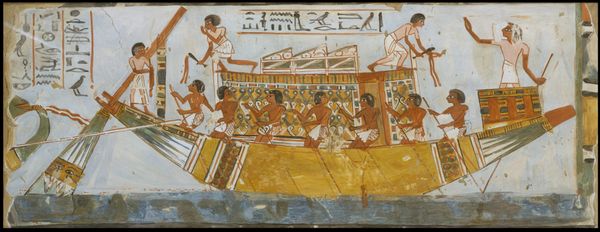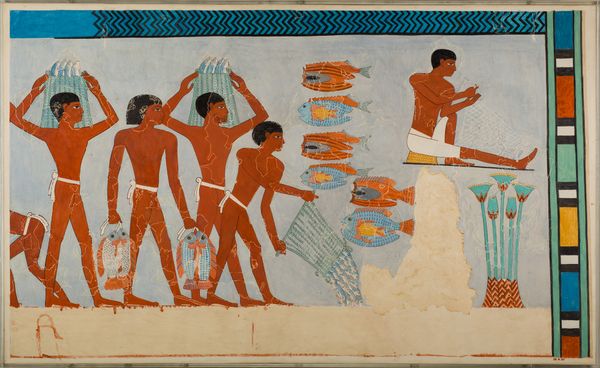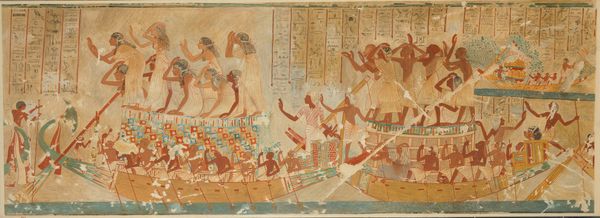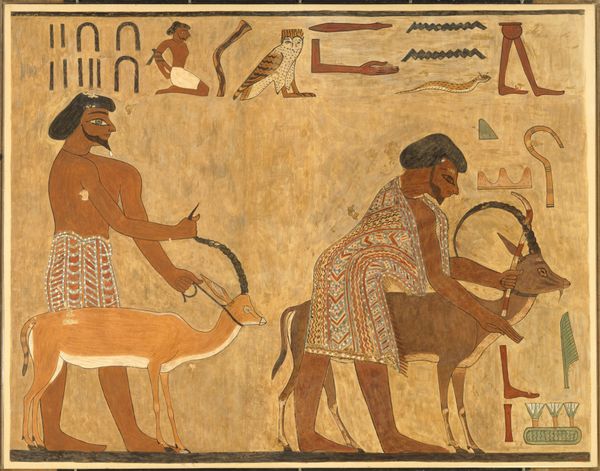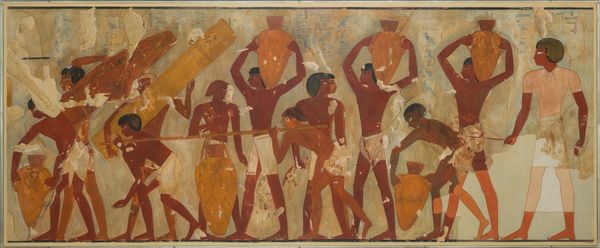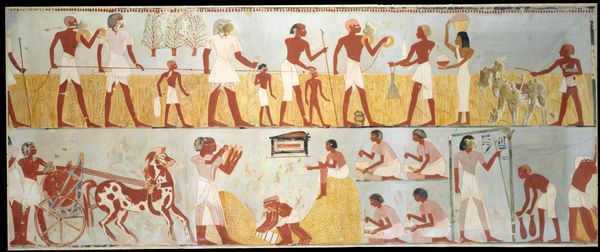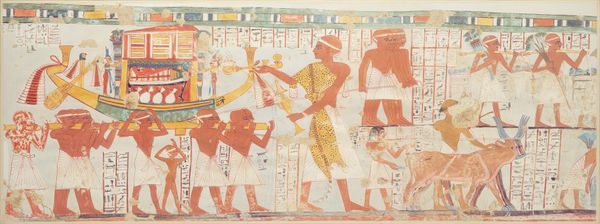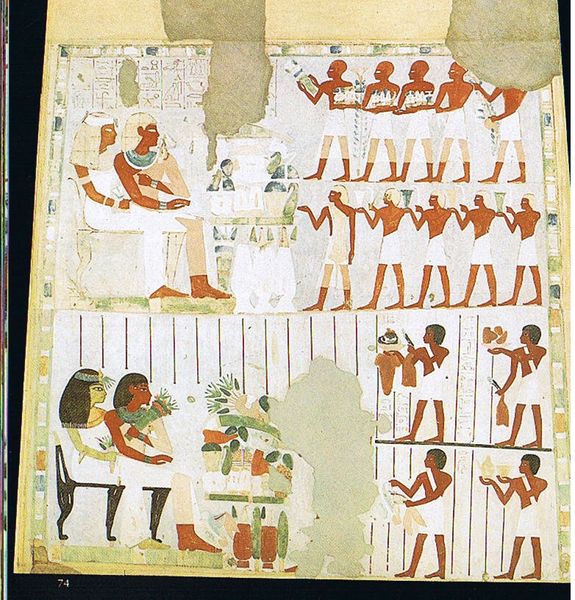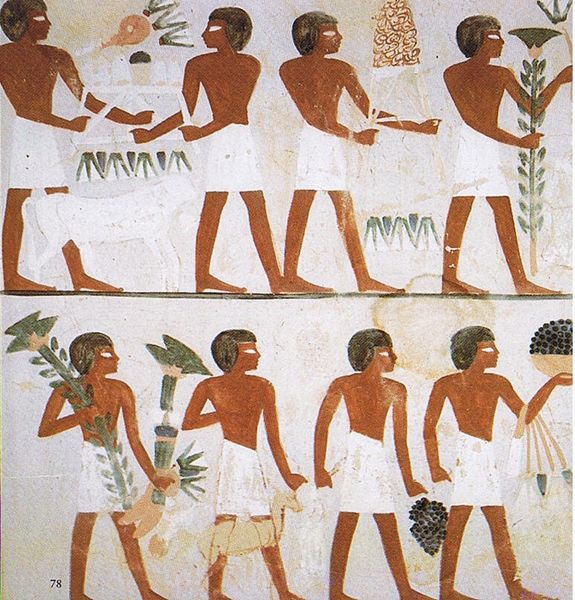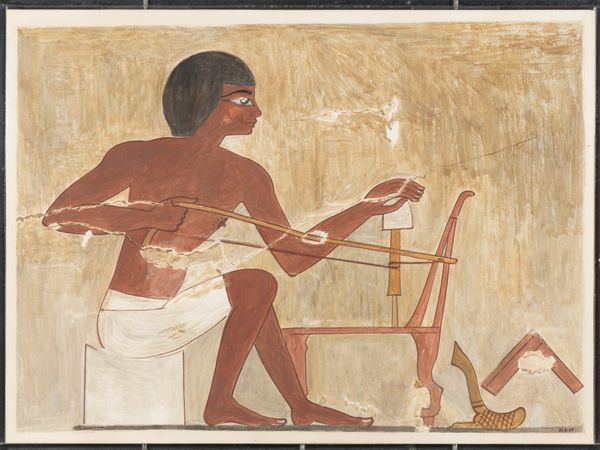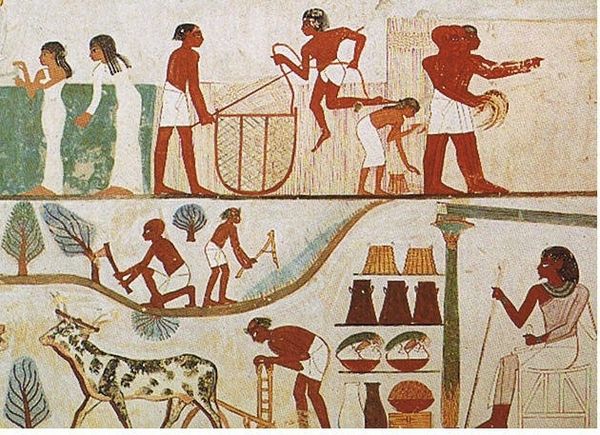
painting, fresco
#
portrait
#
water colours
#
painting
#
landscape
#
ancient-egyptian-art
#
figuration
#
form
#
fresco
#
egypt
#
ancient-mediterranean
#
men
#
line
#
genre-painting
#
history-painting
#
watercolor
#
realism
Dimensions: facsimile: h. 50 cm (19 11/16 in); w. 159.5 cm (62 13/16 in) scale 1:1 framed: h. 57.5 cm (22 5/8 in); w. 165.1 cm (65 in); th. 3.8 cm (1 1/2 in)
Copyright: Public Domain
Editor: This is a section of a fresco painting from the Tomb of Nebamun and Ipuky, dating back to 1390 BC. It's quite a detailed scene, isn't it? It shows many figures working, seemingly crafting precious objects. What stands out to you? Curator: I'm struck by the depiction of labor. Note how the painting emphasizes the process and materiality of creation, depicting the artisans engaged in their work. How does it challenge the separation between high art and craft, when considered in relation to its societal use? Editor: Well, it does give a behind-the-scenes look at the creation of what I assume are luxurious goods, implying craftsmanship as being integral. Would these artisans even be seen as 'artists' in their time, or purely labor? Curator: Exactly. It compels us to consider their social status, the consumption of their products, and their conditions of work, which is particularly potent when juxtaposed against the traditional understanding of "art" for elite purposes. Note how little differentiation there is between each figure? How might the means of production and the division of labor be reflected in their depictions? Editor: That’s a really interesting point. They’re presented almost uniformly, their individual contributions seem less important than the collective process. Curator: Precisely! It moves the focus from the individual genius of an “artist” to the collaborative nature of craft production. How does viewing it this way, impact your interpretation of ancient Egyptian art in general? Editor: It shifts my perspective quite a bit. Instead of only considering the finished product and its aesthetic value, I'm now considering the lives and work that made it possible. Curator: A shift that helps us grapple with a more holistic picture of the past. We look beyond royal patronage, directly at the processes and people integral to culture. Editor: Thanks, I never thought about the labor and the modes of production involved in pieces like these before. I learned to appreciate this from a new viewpoint.
Comments
No comments
Be the first to comment and join the conversation on the ultimate creative platform.
